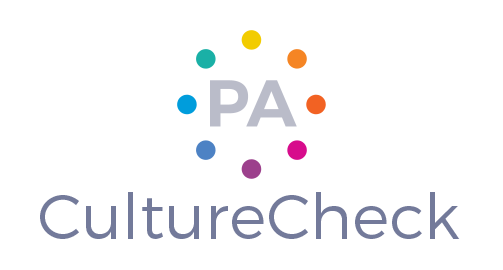
Arts, culture, and humanities are vital.
PA CultureCheck is a research and advocacy initiative that documents and amplifies the experiences, strengths, and concerns of Pennsylvania’s cultural sector. With nearly 1,000 survey responses over the past three years, this 2025 release continues to track statewide post-pandemic recovery and local impact. It also addresses federal disruptions threatening the health of our sector and communities. The findings are a clear call to invest in the creativity and impact of Pennsylvania’s cultural organizations, so that our local economies grow, our communities thrive, and our well-being is improved. Our work aims to strengthen and mobilize communities.
The 2025 PA CultureCheck includes responses from community artists, culture bearers, nonprofit leaders, librarians, historians, curators, and educators in 401 organizations statewide, paired with insights from small group conversations in virtual listening sessions. The data in this year’s report was gathered and compiled before the new federal administration began cutting vital funding for the arts and humanities across Pennsylvania. In response, we fielded supplemental questions focused on these emerging disruptions to ensure a complete and timely picture of the urgent challenges ahead.
PA CultureCheck highlights a sector that has made significant progress on the path to recovery from the COVID-19 pandemic, but now faces new risks. This report has been designed to equip everyone working on the front lines of the arts and humanities, along with advocates, funders, policymakers, and supporters in business and the media, with the data needed to make the case for strengthening and sustaining Pennsylvania’s cultural infrastructure.
We invite you to explore this webpage and join us in using these findings as a tool for change. The future depends on what we do next.
PA CultureCheck is a research and advocacy collaboration, led statewide by PA Humanities, with regional leaders Greater Philadelphia Cultural Alliance and the Greater Pittsburgh Arts Council. Together, we use data, storytelling, and on-the-ground experience to drive change, amplify community voices, and lead statewide and local advocacy that strengthens and sustains the cultural sector.
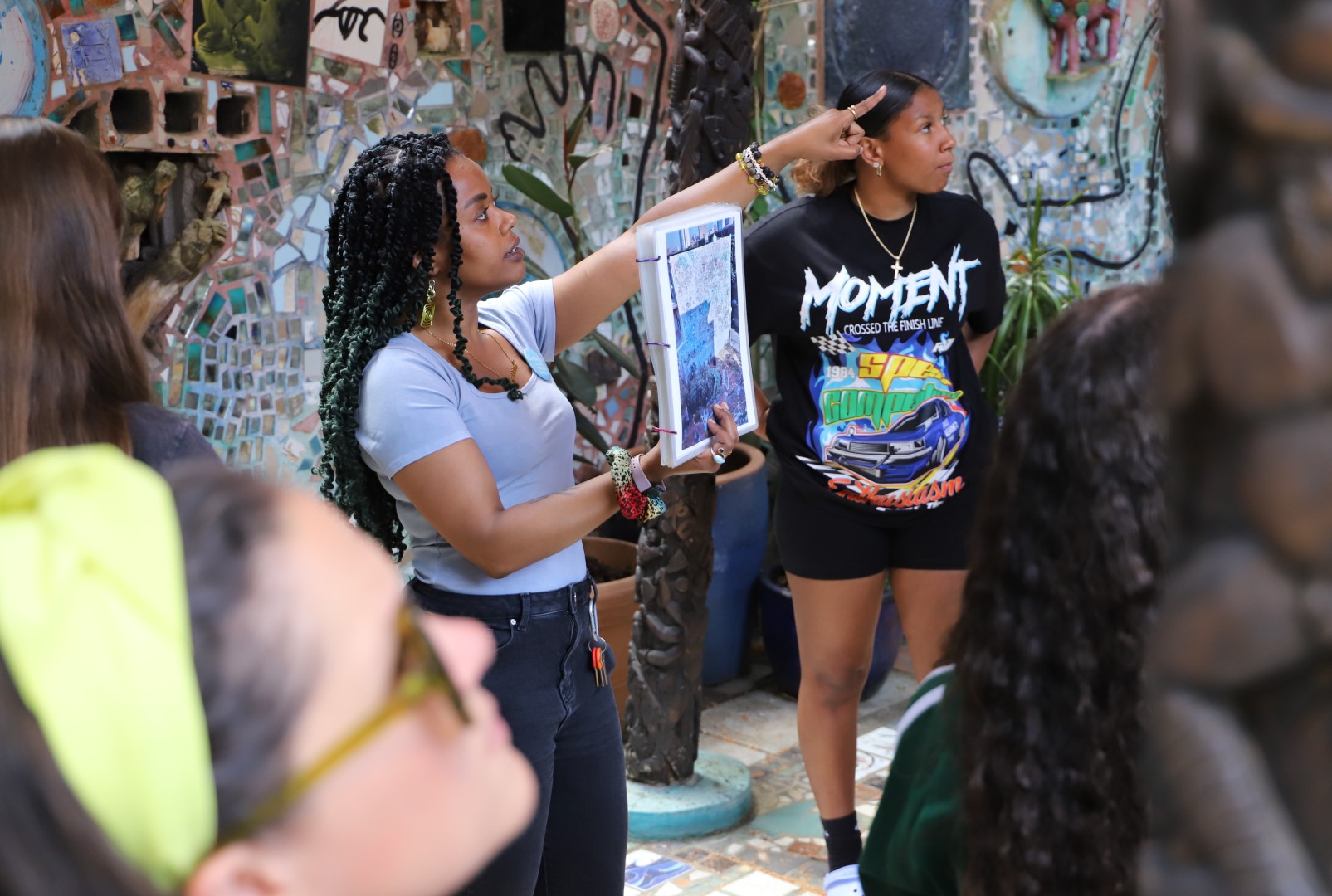
Themes
PA CultureCheck reveals a sector in motion—rebuilding, adapting, and serving communities—while showing resilience in the face of financial and political challenges that are putting their contributions to our local economies, community vitality, and social fabric at risk. These themes spotlight where the sector is gaining ground and where renewed support could build progress.
Arts, Culture, and Humanities are Vital and they’re at Risk
Cultural organizations are vital to Pennsylvania’s well-being, economies, and civic life. From libraries and historical societies to theaters, museums, and arts education programs, they anchor public life across the state, providing cohesion at a time of disconnection and division. 97% of organizations report active partnerships with schools, senior centers, food pantries, and more. Their programs address youth development, mental health, education, and community belonging while also fueling a $30.4 billion industry supporting nearly 189,700 jobs. But this essential work is under threat.
Audiences Are Coming Back—With New Engagement Patterns and Shifts in Practice
Attendance is trending upward, with more groups reporting steady growth. Recovery remains uneven, especially for performing arts groups, and leaders are reporting changing patterns of participation. Since the pandemic, organizations have been adapting with creative, community-driven approaches and increasingly adding more opportunities to gather for unique experiences, plus expanding their digital footprint to be more responsive and attentive.
Financial Pressures Challenge Capacity and Creativity
Some organizations are seeing revenue gains and creatively expanding programs to meet increased community demand, even as once reliable public grants and some philanthropic funding have been discouraging and inflation drives up salaries, utilities, and rent. Others are finding innovative ways to stretch resources and do more with less. Still, small and mid-sized groups say rising costs are outpacing those gains, pointing to the need for stronger, more stable funding streams to continue developing audiences and serving as community hubs for cultural connection and well-being.
Recognition Lags Behind Impact
Cultural organizations are central to education, community health, and local economies, but many cultural leaders say the significant contributions of their organizations are overlooked and underrecognized. Frustrations about visibility and the challenges of effective public relations were raised repeatedly. Elevating the public value of cultural work across sectors is key to gaining the recognition and support needed to thrive. This must be matched by representation, with arts, culture, and the humanities at the heart of civic decision-making.
Dedicated Funding Is Essential for a Sustainable Future
Without sustained investment, Pennsylvania’s cultural infrastructure cannot meet rising community demand. Cultural leaders across Pennsylvania called on civic leaders to create a dedicated fund to support general operations. The need is greater than ever and funds must go beyond project-based grants and last through different political administrations. This is critical to maintain effective programs, experienced staff, and suitable spaces so they can creatively meet the moment and serve community needs. As demand grows and costs rise, organizations need flexible, reliable funding to stay responsive, innovative, and resilient in the communities they serve.
Trends
Since launching PA CultureCheck in 2022, nearly 1,000 surveys have helped us track both year-over-year and emerging trends in the cultural sector’s recovery, revealing steady momentum, growing community impact, support for health and wellness, and opportunities for change.
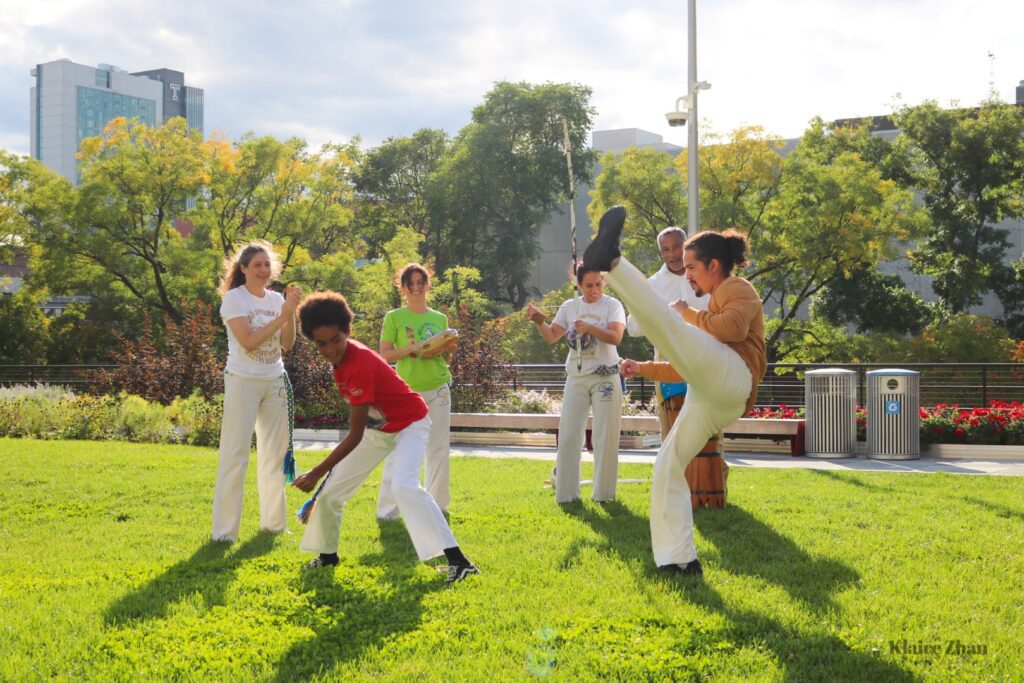
Health & Wellness
Program Growth 2023-2024
Largest Increases - Organizations Working on Key Issues
No Data Found
Cultural engagement is increasingly vital to health and wellness, with notable growth in programs supporting mental health (from 29% of organizations in 2023 to 43% in 2024), physical wellness (from 20% in 2023 to 25% in 2024), and aging (from 25% in 2023 to 30% in 2024). This emerging trend highlights the sector’s important role in healing, connection, and community care.
Community Engagement
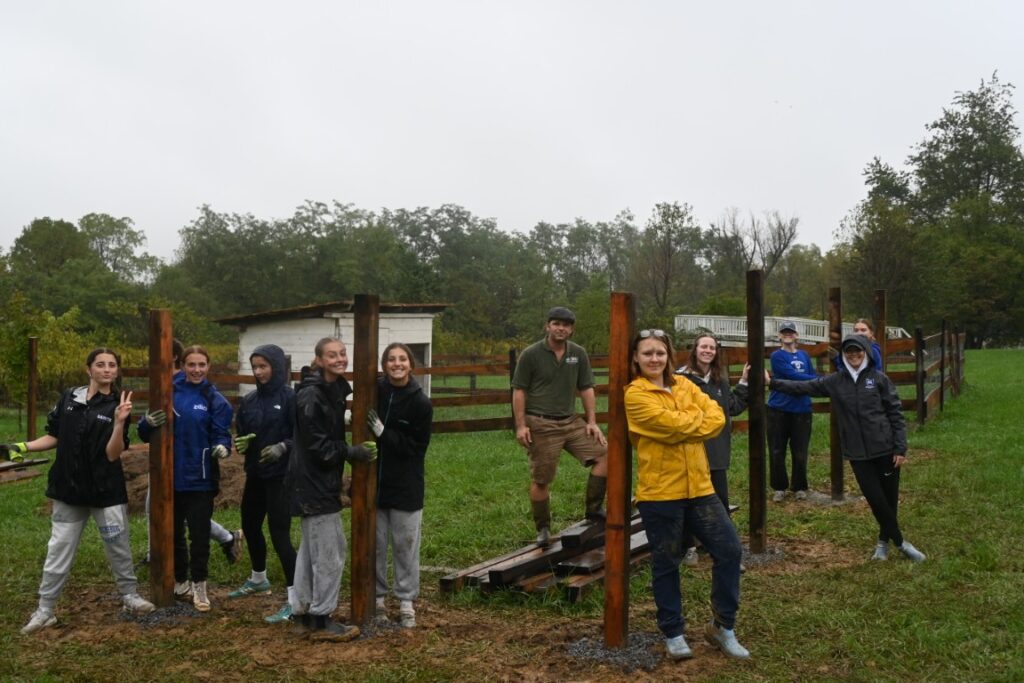
97% Partner with community organizations or institutions to deliver programs (+10% from 2022)
80% Partner with Schools (+14% from 2022)
59% Partner with Parks or Rec Centers (+12% from 2022)
35% Partner with Senior Centers or Orgs (+8% from 2022)
31% Partner with Farmers’ Markets or Food Pantries (+4% from 2022)
Cultural organizations’ partnerships continue to grow with community institutions, schools, parks and recreation, senior centers, and farmers’ markets. They are co-creating programs with communities and increasingly serving as hubs that respond to local needs.
Attendance Recovery
Organizations back to or above 2019 levels
No Data Found
Attendance is rising, but half of organizations have not returned to pre-pandemic levels. The most growth in 2023-2024 was for performing arts (+19%) and museums and historical organizations (+16%). 70% of libraries and archives report they are back to 2019 levels. Regionally, the northeast reports the biggest gains at 64%, and the lowest in north central at 36% and Pittsburgh at 37%.
Rising Costs
Costs Most Affected by Inflation
Top 3 selected items
No Data Found
Rising costs emerged as a major concern in our prior survey, prompting us to track inflation impacts more closely this year. Salaries topped the list of worries around inflation, followed by space costs and general purchases, revealing a deep strain on day-to-day operations.
If Federal Support Continues to Disappear, What’s at Stake?
The federal government is the largest single source of cultural funding in Pennsylvania, providing over $123 million since 2020 from the National Endowment for the Arts, the National Endowment for the Humanities, the Institute of Museum and Library Services, and the Historic Preservation Fund at the National Park Service. This makes the sector, and our communities, especially vulnerable to federal disruptions. In the spring of 2025, as federal cuts were looming, we issued a supplemental survey to assess the threat. Respondents reported receiving vital investment from the federal sources above and more to deliver transformational programs, employ local residents, and serve their communities.
Based on the survey results, action is needed to mitigate federal cuts and onerous new grant guidelines from harming Pennsylvania’s cultural ecosystem and causing cascading effects, such as reduced funding at the state and local levels and funding from community foundations, that could negatively impact community-based work.
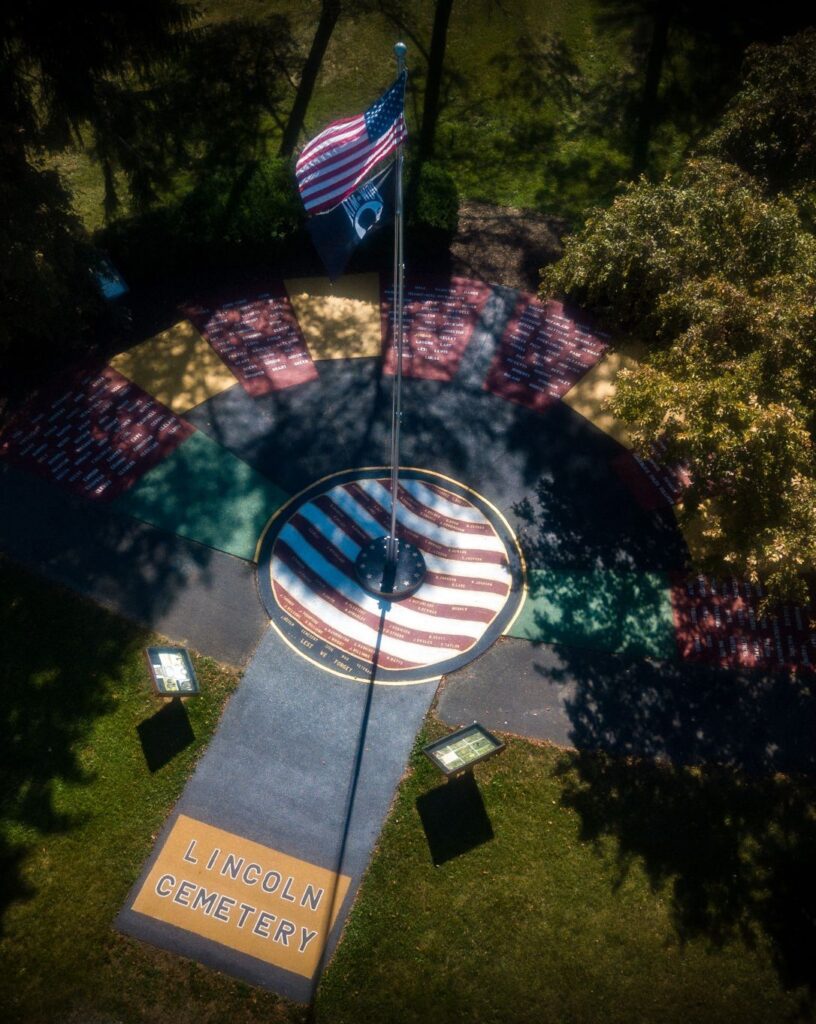
Cultural organizations shared concerns about federal cuts:
No Data Found
Organizations would be impacted by cuts or changes
91%
No Data Found
Concerned about cuts to NEH, NEA, IMLS
68%
No Data Found
Programs/education programs potentially affected
60%
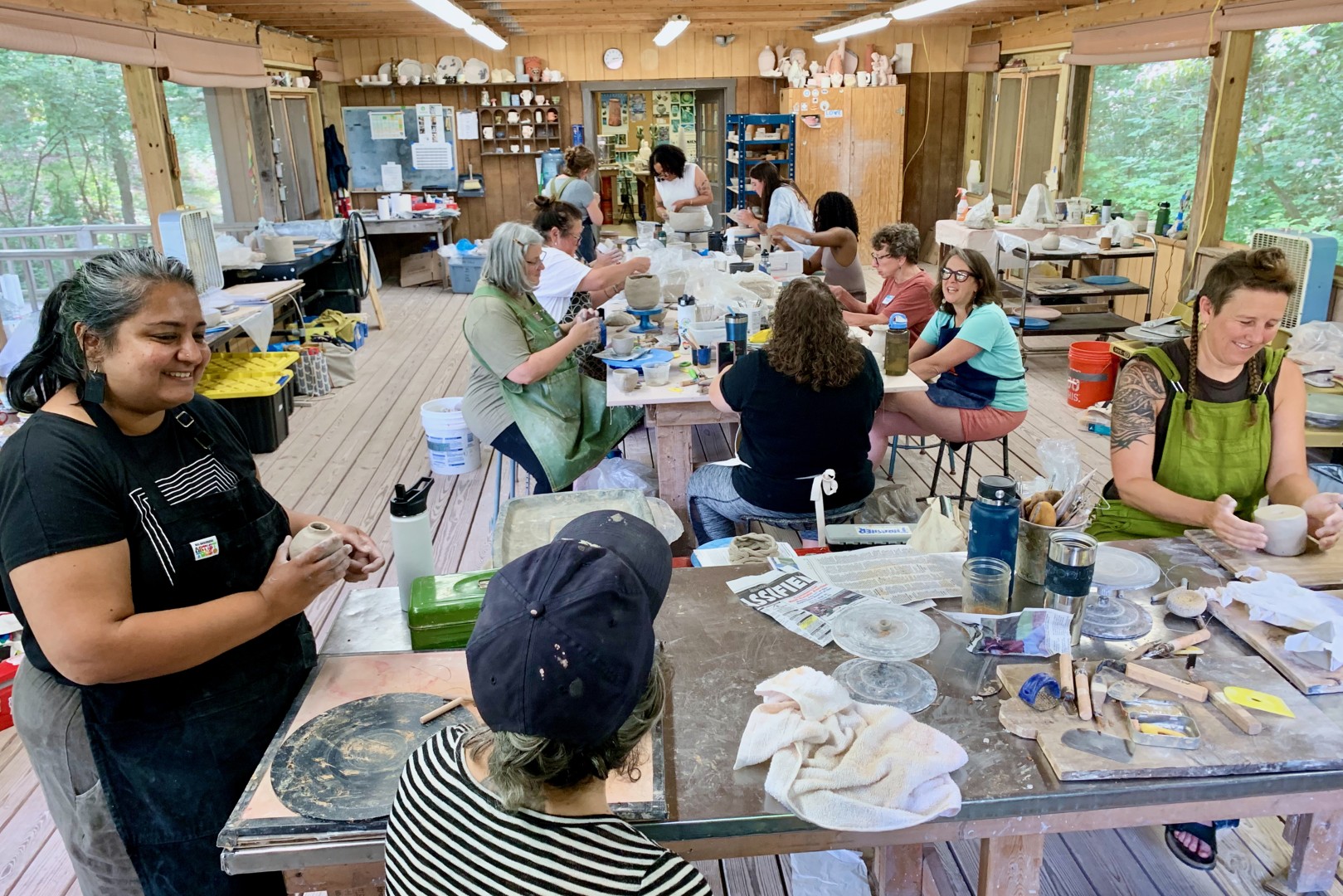
Cultural vitality is community vitality
The future of Pennsylvania’s communities depends on the strength of our cultural sector. There is a growing recognition that cultural work is part of our social infrastructure and deeply tied to our physical, mental, and community health. As one youth-serving survey participant said, “We are extraordinarily active in community organizations, associations and initiatives with a goal of making ourselves and students a part of the fabric of the community and seen as not only a positive force, but a necessary one…” At its core, this work grows human connection: the relationships, belonging, and shared meaning that help people thrive.
But the sector stands at a crossroads. Even as more groups serve as community hubs and take on pressing issues like youth mental health and aging, they do so while facing rising costs, funding uncertainty, and gaps in recognition. Cultural leaders are responding with urgency and creativity, but also with the message that sustaining this work requires deeper investment, broader visibility, and stronger infrastructure.
Culture Builds Stronger Communities
Cultural organizations are increasingly stepping into roles that support both mental and physical health. Caring for their communities has become central to their work. A librarian shared that they “worked with adolescents with significant mental health concerns… The teens that we work with grow and thrive with the enrichment that the program brings.” Between 2023 and 2024, there was a 14% increase in organizations reporting that they offer mental health-related programs (from 29% of organizations in 2023 to 43% in 2024) and a 5% increase in those reporting that they are addressing physical wellness and aging. Mental health, in particular, has become a pressing focus in youth development, with cultural work seen as a powerful force for healing, reducing isolation, and fostering belonging.
From story circles for older adults to contemplative nature walks and foodways education, these programs are rooted in community care and connection that combat loneliness. Cultural work is not just enrichment—it is vital to how people heal, connect, and thrive. As one participant said, “Culture is the center of healing and wholeness for communities.”
Culture at a Financial Crossroads
Cultural workers play a vital role in building strong, healthy communities, but the sector itself faces persistent challenges to its sustainability. Pennsylvania ranks 39th in state arts investment at just $0.91 per capita—well behind neighboring states like New Jersey ($4.45), New York ($4.45), Maryland ($5.63), and Delaware ($6.62). PA organizations face a strained financial landscape, with only 35% reporting increased revenue over the last three years. Notably, museums and historical organizations were more likely to see revenue growth. But across 84% of open-ended responses, organizations cited declining revenue from grants, individual giving, or ticket sales. Performing arts groups, libraries, and archives reported these losses most often. Further complicating the financial picture, most gains haven’t kept pace with inflation or rising demand for services.
These gaps, alongside other funding issues, undermine the capacity of organizations to deliver wide-reaching community impact. Leaders across the state emphasized that flexible, reliable funding is essential to staying resilient, responsive, and capable of meeting growing community demand. We are at an inflection point: without more flexible, sustained funding, many of the programs and services communities depend on are at risk. As one participant concluded, “We are stepping in to fill the voids where public systems are failing … but we cannot do it on fumes.”
Supplemental Regional Reports
Pennsylvania’s cultural workers are deeply embedded in local communities and, together, contribute to the vitality and resilience of the entire state. Below are regional snapshots with supplemental quantitative data spotlighting unique strengths, challenges, and opportunities in Greater Philadelphia, Greater Pittsburgh, and across the Commonwealth. Each one offers a deeper look at how cultural organizations are adapting, connecting, and shaping their communities.
Statewide
Cultural organizations statewide are rebuilding with creativity and purpose. From small towns to major cities, they’re strengthening partnerships, expanding access, and fueling local well-being and vitality.
- 649 participating organizations since 2023
- 97% (99% in rural areas) partner with community organizations or institutions to deliver programs
- Organizations in Northeast PA and Southwest PA (outside the Pittsburgh Metro Area) were more likely to have seen attendance return to 2019 levels
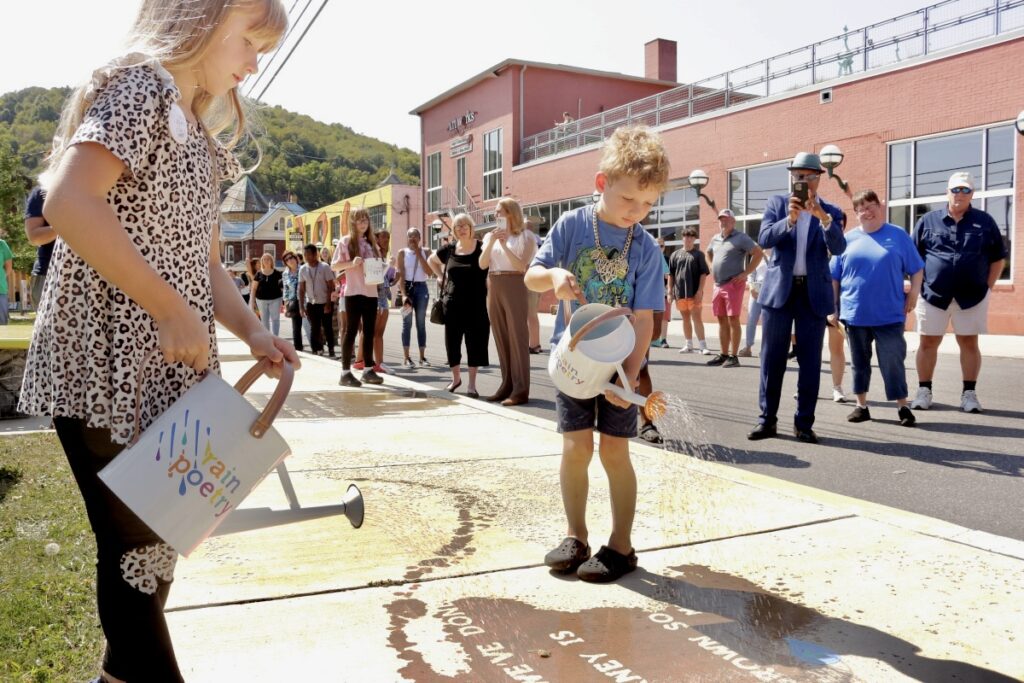

Greater Philadelphia
In Southeastern PA, cultural organizations are meeting the moment with creativity, equity-focused programming, and powerful local collaborations. However, there’s a growing call to public and private sectors to step up and increase funding given federal cuts.
- 279 participating organizations, including 96 from the 4 PA suburban counties
- 62% say changes to federal funding would have a direct effect on exhibits, performances, and/or educational programming
- When asked about what the sector must address to ensure a healthy future, organizations in this region were more likely to mention “Advocacy” than those in other regions (45% of all comments on this issue from SEPA organizations)
Greater Pittsburgh
Organizations in Greater Pittsburgh are a model of community-rooted culture—working across sectors to reach seniors, students, and underserved neighborhoods. Despite workforce and funding pressures, the region’s creative sector continues to show bold leadership.
- Local funding is complex, with Allegheny County providing $25.87 per capita, which is strong compared to other US major metros, while the City of Pittsburgh’s direct investment is limited
- Attendance increasing more slowly than other regions since 2022 (36% vs 50% statewide average of organizations back to or above 2019 levels)
- When asked about what the sector must address to ensure a healthy future, organizations in this region were twice as likely to mention “leadership” (10% vs. 5%)
Download the supplemental data report in PDF form below.

Why This Research Matters and What Comes Next
The data in this report confirms: Pennsylvania’s arts and humanities are not a luxury; they are essential to our economy, our communities, and our shared well-being. These sectors drive connection, learning, healing, innovation, and economic vitality across the Commonwealth.
Before the threat of federal funding cuts, PA CultureCheck documented challenges resulting from the pandemic but also the sector’s momentum, showing evidence of growth, resilience, and creativity across the field. Now, that progress is at risk. Sweeping executive orders targeting arts and humanities funding threaten the very infrastructure that brings people together, fuels imagination, and helps communities thrive. Without immediate action and sustained investment, we risk losing the cultural assets that strengthen our civic and social fabric.
PA CultureCheck is more than a report; it is a call to action and a tool for change. The future of Pennsylvania’s creative and cultural sector depends on the choices we make today.
Let's move funders to act now.
Pennsylvania’s nonprofit arts and humanities organizations have long operated with limited public support. State arts funding per-capita investment has trailed national benchmarks for years, forcing many organizations to deliver more with fewer resources. Now, the situation is more urgent. New federal funding restrictions and rollbacks targeting the arts and humanities also undermine essential health and human services that support both the individuals who work in our sector and the communities we serve.
The stakes are high. Communities are facing reduced programming, organizations are laying off staff, and some cultural institutions may permanently close. We will lose more than artistic performances, book festivals, exhibitions, and tours. We will lose the ingredients essential to making our communities and economies thrive.
The solution is clear. Public and private support must expand and include sustained, flexible funding that allows for general operating support, enabling cultural organizations to retain staff, continue vital programming, and plan for the future with stability and confidence.
Use this report as a tool for advocacy. Share it with donors, elected officials, board members, and grantmakers. Emphasize that investing in the arts and humanities is not a partisan act, it is a commitment to community health and vitality. Encourage funders to value our sector and invest in our growth with more general operating support. Without reliable, long-term support, we risk losing the very systems that keep our communities and economies connected and strong.
Let's raise the visibility of our impact.
The arts and humanities contribute to every aspect of community life, including youth development, mental health and belonging, economic mobility, and civic engagement. Yet many of these contributions go unnoticed or unacknowledged by those in positions of influence.
Tell your story. Highlight your organization’s contributions to well-being, learning, connection, and economic growth. Share your successes and challenges broadly—with the press, local media makers and content creators, and with local public officials and civic leaders. Encourage them to amplify your message through their own networks. Invite influencers and elected officials, especially during congressional recesses when they are home, to your events, where they can see your impact firsthand. Dedicate time and resources to storytelling, and help others in your network do the same. The more our stories are told, the more support we can build.
Let's build civic leadership and collaboration across sectors.
We need to step up and ensure that the arts and humanities are included in every conversation about the future of our communities. We have a place in shaping strategies for public health, education, housing, and economic development. Everyone has a role and a responsibility to create opportunities for facilitating greater cross-sector collaboration, welcoming local voices, and ensuring that cultural work is shaped and led by those it serves. There must be an uninterrupted commitment to advocate for equality, elevate all voices, and strengthen inclusive leadership and participation across the sector.
Continue to look for new opportunities to make your voice heard, encourage others to step up, and partner across sectors, both locally and statewide. Join collective advocacy efforts that unite cultural organizations with partners in education, health care, housing, and other sectors. Co-create programs and initiatives that meet shared goals. Advocate for the arts and humanities to be part of policy conversations and community planning. Attend public forums and conferences and make the case for including culture in program design and decision-making. Open doors, share resources, and support leadership that reflects the people you serve.

Who we heard from
Participating Organizations By Type (2025)
No Data Found
Organization Type (2025)
Libraries & Archives
51
Historical Museums & Societies
60
Art, Science, & Other Museums
44
Performing Arts
82
Community & Education
108
Service, Support, & Other
37
Media
18
PA CultureCheck is powered by the people who shape the creative life of Pennsylvania: artists, educators, organizers, historians, performers, and cultural workers from every corner of the Commonwealth. We had a total of 504 responses to PA CultureCheck 2024-2025, conducting our main survey from August through October 2024, with a follow-up Federal Funding survey January 2025 through March 2025. Below are statistics on participation since PA CultureCheck began in 2022, which are included in findings above.
We are deeply grateful to everyone who shared their story with us.
Quick facts 2022-2025
- 992 total surveys over three years
- 58% of surveys come from repeat survey respondents
- 649 unique organizations
- 60 of 67 PA counties with participating organizations
- 52% operate with budgets under $500K (71% have budgets under $1.5M)
- 21% participants in rural counties
- 992 total surveys over three years
2022-2025 Participation Map*
* Zoom in to see participating organizations; click on points for participant info.
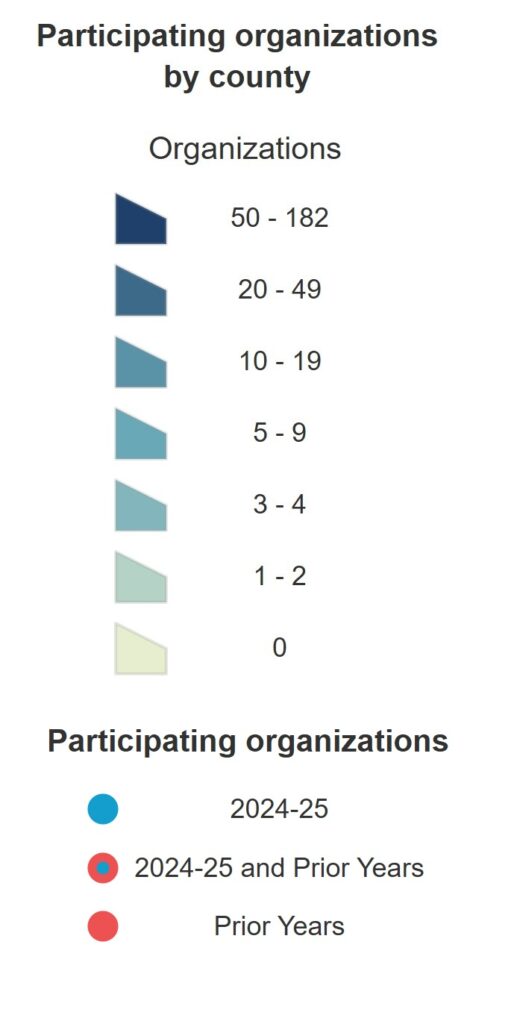
Thank you to all our PA CultureCheck 2025 participants
| ORGANIZATION | TYPE | COUNTY | REGION |
|---|---|---|---|
| Adams County Arts Council | Community & Education | Adams | SC |
| Gettysburg College (NEH Landmarks of History & Culture program) | Community & Education | Adams | SC |
| Interfaith Center for Peace and Justice | Community & Education | Adams | SC |
| Littlestown Library | Libraries & Archives | Adams | SC |
| Industrial Arts Workshop | Art, Science, & Other Museums | Allegheny | SW_GP |
| Silver Eye Center for Photography | Art, Science, & Other Museums | Allegheny | SW_GP |
| August Wilson African American Cultural Center | Community & Education | Allegheny | SW_GP |
| Parsec Inc | Community & Education | Allegheny | SW_GP |
| Pittsburgh Irish Festival | Community & Education | Allegheny | SW_GP |
| RAINBOW SERPENT INC | Community & Education | Allegheny | SW_GP |
| Society to Preserve the Millvale Murals of Maxo Vanka | Historical Museums & Societies | Allegheny | SW_GP |
| Andrew Carnegie Free Library & Music Hall | Libraries & Archives | Allegheny | SW_GP |
| Carnegie Library of Homestead | Libraries & Archives | Allegheny | SW_GP |
| Carnegie Library of Pittsburgh | Libraries & Archives | Allegheny | SW_GP |
| Millvale Community Library | Libraries & Archives | Allegheny | SW_GP |
| Autumn House Press | Media | Allegheny | SW_GP |
| Screenshot Asia | Media | Allegheny | SW_GP |
| SLB Radio Productions Inc | Media | Allegheny | SW_GP |
| PearlArts Movement + Sound | Performing Arts | Allegheny | SW_GP |
| Prime Stage Theatre | Performing Arts | Allegheny | SW_GP |
| Sounds of Pittsburgh Chorus | Performing Arts | Allegheny | SW_GP |
| Brew House Arts | Art, Science, & Other Museums | Allegheny | SW_GP |
| Carnegie Museum of Art | Art, Science, & Other Museums | Allegheny | SW_GP |
| Carnegie Museums | Art, Science, & Other Museums | Allegheny | SW_GP |
| Children's Museum of Pittsburgh | Art, Science, & Other Museums | Allegheny | SW_GP |
| Contemporary Craft | Art, Science, & Other Museums | Allegheny | SW_GP |
| Mattress Factory Ltd. | Art, Science, & Other Museums | Allegheny | SW_GP |
| Pittsburgh Glass Center | Art, Science, & Other Museums | Allegheny | SW_GP |
| Assemble | Community & Education | Allegheny | SW_GP |
| El Círculo Juvenil de Cultura | Community & Education | Allegheny | SW_GP |
| Hill Dance Academy Theatre | Community & Education | Allegheny | SW_GP |
| Pittsburgh Society of Artists | Community & Education | Allegheny | SW_GP |
| Radiant Hall | Community & Education | Allegheny | SW_GP |
| Women of Visions | Community & Education | Allegheny | SW_GP |
| Heinz History Center | Historical Museums & Societies | Allegheny | SW_GP |
| Rodef Shalom Congregation | Historical Museums & Societies | Allegheny | SW_GP |
| CC Mellor Memorial Library | Libraries & Archives | Allegheny | SW_GP |
| Glass Fox Productions | Media | Allegheny | SW_GP |
| Pittsburgh centre for art and media | Media | Allegheny | SW_GP |
| PublicSource | Media | Allegheny | SW_GP |
| Alumni Theater Company | Performing Arts | Allegheny | SW_GP |
| Balafon West African Dance Ensemble | Performing Arts | Allegheny | SW_GP |
| Carnegie of Homestead Music Hall | Performing Arts | Allegheny | SW_GP |
| City Theatre Company | Performing Arts | Allegheny | SW_GP |
| Confluence Ballet Co. | Performing Arts | Allegheny | SW_GP |
| Coro Latinoamericano | Performing Arts | Allegheny | SW_GP |
| Kelly Strayhorn Theater | Performing Arts | Allegheny | SW_GP |
| New Hazlett Center for the Performing Arts | Performing Arts | Allegheny | SW_GP |
| Pittsburgh Ballet Theatre | Performing Arts | Allegheny | SW_GP |
| Pittsburgh Opera | Performing Arts | Allegheny | SW_GP |
| Pittsburgh Symphony Orchestra | Performing Arts | Allegheny | SW_GP |
| River City Brass Band | Performing Arts | Allegheny | SW_GP |
| Three Rivers Young Peoples Orchestras | Performing Arts | Allegheny | SW_GP |
| Greater Pittsburgh Arts Council | Service, Support, & Other | Allegheny | SW_GP |
| Pittsburgh Cultural Trust | Service, Support, & Other | Allegheny | SW_GP |
| Porter Loves | Service, Support, & Other | Allegheny | SW_GP |
| First Baptist Church | Community & Education | Beaver | SW_GP |
| Genesis Collective, The | Community & Education | Beaver | SW_GP |
| Human City Creative | Media | Beaver | SW_GP |
| Bedford Heritage Trust | Historical Museums & Societies | Bedford | SW |
| Barrio Alegria | Community & Education | Berks | SC |
| Berks Arts | Community & Education | Berks | SC |
| Brandywine Community Library | Libraries & Archives | Berks | SC |
| Kutztown Community Library | Libraries & Archives | Berks | SC |
| Reading Public Library, PA | Libraries & Archives | Berks | SC |
| Pretzel City Press | Media | Berks | SC |
| Kutztown Folk Music Society | Performing Arts | Berks | SC |
| Reading Choral Society | Performing Arts | Berks | SC |
| Altoona Area Public Library | Libraries & Archives | Blair | SW |
| Hollidaysburg Area Public Library | Libraries & Archives | Blair | SW |
| AOY Art Center | Community & Education | Bucks | SE |
| Art goes to school of Delaware valley | Community & Education | Bucks | SE |
| Phillips' Mill Community Association | Community & Education | Bucks | SE |
| Historic Fallsington, Inc. | Historical Museums & Societies | Bucks | SE |
| Pennsbury Manor | Historical Museums & Societies | Bucks | SE |
| Bristol Riverside Theatre | Performing Arts | Bucks | SE |
| La Fiocco | Performing Arts | Bucks | SE |
| Philadelphia Area Consortium of Special Collections Libraries | Service, Support, & Other | Bucks | SE |
| Cranberry Public Library | Libraries & Archives | Butler | SW |
| Zelienople Area Public Library | Libraries & Archives | Butler | SW |
| Community Art Center Of Cambria Cou | Community & Education | Cambria | SW |
| Cambria County Library System | Libraries & Archives | Cambria | SW |
| Johnstown District Libraries | Libraries & Archives | Cambria | SW |
| University of Pittsburgh Johnstown | Performing Arts | Cambria | SW |
| Lumber Heritage Region | Service, Support, & Other | Cameron | NW |
| Discovery Space of Central PA | Art, Science, & Other Museums | Centre | NC |
| EMS Museum & Art Gallery | Art, Science, & Other Museums | Centre | NC |
| 3 Dots Downtown | Community & Education | Centre | NC |
| Individual Respondent | Community & Education | Centre | NC |
| Advent Historical Society | Historical Museums & Societies | Centre | NC |
| Columbus Chapel & Boal Mansion Museum | Historical Museums & Societies | Centre | NC |
| Centre County Library and Historical Museum | Libraries & Archives | Centre | NC |
| Schlow Centre Region Library | Libraries & Archives | Centre | NC |
| Ridgelines Language Arts | Media | Centre | NC |
| Center for the Performing Arts Penn State | Performing Arts | Centre | NC |
| Jenkins Arboretum & Gardens | Art, Science, & Other Museums | Chester | SE |
| Longwood Gardens | Art, Science, & Other Museums | Chester | SE |
| Schuylkill River Heritage Center | Art, Science, & Other Museums | Chester | SE |
| FHer Co. The Rainbow Balloons | Community & Education | Chester | SE |
| Sruti, the India Music and Dance Society | Community & Education | Chester | SE |
| Chester County History Center | Historical Museums & Societies | Chester | SE |
| Historic Yellow Springs | Historical Museums & Societies | Chester | SE |
| National Iron & Steel Heritage Museum | Historical Museums & Societies | Chester | SE |
| Atglen Public Library | Libraries & Archives | Chester | SE |
| Colonial Theatre | Performing Arts | Chester | SE |
| Allegheny RiverStone Center for the Arts | Performing Arts | Clarion | NW |
| Clinton County Historical Society | Historical Museums & Societies | Clinton | NC |
| Exchange Arts, d.b.a. The Exchange | Community & Education | Columbia | NE |
| Bloomsburg Public Library | Libraries & Archives | Columbia | NE |
| Art & Environment Initiative, The | Community & Education | Crawford | NW |
| Titusville Council on the Arts | Community & Education | Crawford | NW |
| Crawford County Historical Society | Historical Museums & Societies | Crawford | NW |
| Benson Memorial Library | Libraries & Archives | Crawford | NW |
| Saegertown Area Library | Libraries & Archives | Crawford | NW |
| Mt. Tabor Preservation Project | Historical Museums & Societies | Cumberland | SC |
| Keystones Oral Histories | Media | Cumberland | SC |
| Carlisle Regional Performing Arts Center, Inc. | Performing Arts | Cumberland | SC |
| Bhutanese Community in Harrisburg | Community & Education | Dauphin | SC |
| Historic Harrisburg Association | Historical Museums & Societies | Dauphin | SC |
| National Civil War Museum, The | Historical Museums & Societies | Dauphin | SC |
| Harrisburg Symphony Orchestra | Performing Arts | Dauphin | SC |
| 10,000 Friends of Pennsylvania | Service, Support, & Other | Dauphin | SC |
| World Affairs Council of Harrisburg | Service, Support, & Other | Dauphin | SC |
| Community Arts Center | Community & Education | Delaware | SE |
| Darlington Arts Center | Community & Education | Delaware | SE |
| Kelly Music for Life, Inc. | Community & Education | Delaware | SE |
| Senior Community Services, Inc. | Community & Education | Delaware | SE |
| Williamson College of the Trades | Community & Education | Delaware | SE |
| Marcus Hook Preservation Society | Historical Museums & Societies | Delaware | SE |
| Newtown Public Library | Libraries & Archives | Delaware | SE |
| Upper Darby Township & Sellers Memorial Free Public Library | Libraries & Archives | Delaware | SE |
| Upper Darby Township Library - Municipal Branch | Libraries & Archives | Delaware | SE |
| Lansdowne Symphony Orchestra | Performing Arts | Delaware | SE |
| Keep Music Alive | Service, Support, & Other | Delaware | SE |
| Lansdowne Economic Development Corporation | Service, Support, & Other | Delaware | SE |
| Johnsonburg Public Library | Libraries & Archives | Elk | NW |
| Erie Art Museum | Art, Science, & Other Museums | Erie | NW |
| Goodell Gardens & Homestead | Art, Science, & Other Museums | Erie | NW |
| Grounded Printshop | Art, Science, & Other Museums | Erie | NW |
| AmeriMasala | Community & Education | Erie | NW |
| Corry Area Arts Council | Community & Education | Erie | NW |
| Eries Black Wall Street | Community & Education | Erie | NW |
| Maggie Knox western | Community & Education | Erie | NW |
| Penn State Erie, The Behrend College | Community & Education | Erie | NW |
| Erie County Historical Society / Hagen History Center | Historical Museums & Societies | Erie | NW |
| Dafmark Dance Theater | Performing Arts | Erie | NW |
| Downtown Edinboro Art and Music Festival | Performing Arts | Erie | NW |
| Rhoxon Productions Inc. / Highly Favored Productions LLC | Performing Arts | Erie | NW |
| Erie Arts and Culture | Service, Support, & Other | Erie | NW |
| Erie Yesterday | Service, Support, & Other | Erie | NW |
| Fayette County Cultural Trust | Community & Education | Fayette | SW |
| Touchstone Center for Crafts | Community & Education | Fayette | SW |
| Allison-Antrim Museum, Inc. | Historical Museums & Societies | Franklin | SC |
| Conococheague Institute, The | Historical Museums & Societies | Franklin | SC |
| Fulton County Library | Libraries & Archives | Fulton | SC |
| Anonymous Organization | Historical Museums & Societies | Greene | SW_GP |
| Huntingdon County Historical Society | Historical Museums & Societies | Huntingdon | SC |
| Indiana Free Library & IUP | Libraries & Archives | Indiana | SW |
| Jefferson County History Center | Historical Museums & Societies | Jefferson | NW |
| Punxsutawney Area Historical & Genealogical Society, Inc. | Historical Museums & Societies | Jefferson | NW |
| Punxsutawney Memorial Library | Libraries & Archives | Jefferson | NW |
| AFA Gallery | Art, Science, & Other Museums | Lackawanna | NE |
| Everhart Museum of Natural History, Science & Art | Art, Science, & Other Museums | Lackawanna | NE |
| Hexagon Project | Art, Science, & Other Museums | Lackawanna | NE |
| Scranton Municipal Recreation Authority | Art, Science, & Other Museums | Lackawanna | NE |
| First Friday Scranton | Community & Education | Lackawanna | NE |
| Keystone College | Community & Education | Lackawanna | NE |
| Anthracite Heritage Museum and Iron Furnaces Assoc inc | Historical Museums & Societies | Lackawanna | NE |
| Electric City Trolley Museum Association | Historical Museums & Societies | Lackawanna | NE |
| Lackawanna County Library System | Libraries & Archives | Lackawanna | NE |
| Scranton Public Library | Libraries & Archives | Lackawanna | NE |
| Taylor Community library | Libraries & Archives | Lackawanna | NE |
| Electric City Steel Drum Project | Performing Arts | Lackawanna | NE |
| Scranton Civic Ballet Company | Performing Arts | Lackawanna | NE |
| Lackawanna County Arts & Culture Department | Service, Support, & Other | Lackawanna | NE |
| Lackawanna County Visitors Bureau | Service, Support, & Other | Lackawanna | NE |
| PA Integrated Library System | Service, Support, & Other | Lackawanna | NE |
| Valley In Motion | Service, Support, & Other | Lackawanna | NE |
| Demuth Foundation | Art, Science, & Other Museums | Lancaster | SC |
| Circle Legacy Center | Community & Education | Lancaster | SC |
| John Modern (Dept. of Religious Studies, Franklin & Marshall College) | Community & Education | Lancaster | SC |
| Pennsylvania College of Art & Design - Center for Creative Exploration | Community & Education | Lancaster | SC |
| Pennsylvania College of Art & Design Galleries | Community & Education | Lancaster | SC |
| Christiana Historical Society | Historical Museums & Societies | Lancaster | SC |
| LancasterHistory | Historical Museums & Societies | Lancaster | SC |
| Landis Valley Village and Farm Museum | Historical Museums & Societies | Lancaster | SC |
| Mennonite Life | Historical Museums & Societies | Lancaster | SC |
| Rock Ford Foundation | Historical Museums & Societies | Lancaster | SC |
| Milanof-Schock Library | Libraries & Archives | Lancaster | SC |
| Hoyt Center for the Arts | Community & Education | Lawrence | SW |
| Allentown Art Museum | Art, Science, & Other Museums | Lehigh | NE |
| IceHouse Performing Arts Collaborative | Community & Education | Lehigh | NE |
| Lower Macungie Library | Libraries & Archives | Lehigh | NE |
| Ely Molloy Studio | Media | Lehigh | NE |
| Allentown Symphony Association Inc. | Performing Arts | Lehigh | NE |
| Pennsylvania Shakespeare Festival | Performing Arts | Lehigh | NE |
| Hazleton Art League, The | Community & Education | Luzerne | NE |
| King's College Theatre Department | Community & Education | Luzerne | NE |
| Little Theatre of Wilkes-Barre | Performing Arts | Luzerne | NE |
| Bradford Landmark Society | Historical Museums & Societies | McKean | NW |
| McKean County Historical Society | Historical Museums & Societies | McKean | NW |
| McKean County | Service, Support, & Other | Mckean | NW |
| Quiet Valley Living Historical Farm | Historical Museums & Societies | Monroe | NE |
| Frudakis Studio, Inc. | Art, Science, & Other Museums | Montgomery | SE |
| Abington Art Center | Community & Education | Montgomery | SE |
| CADCOM | Community & Education | Montgomery | SE |
| Literacy Council of Norristown | Community & Education | Montgomery | SE |
| Montgomery County Community College Art Galleries | Community & Education | Montgomery | SE |
| Philomusica of Delaware Valley (Philomusica Chorale) | Community & Education | Montgomery | SE |
| Pickleberry Pie Inc | Community & Education | Montgomery | SE |
| RSVP | Community & Education | Montgomery | SE |
| Historic Trappe | Historical Museums & Societies | Montgomery | SE |
| Morgan Log House Historical Society | Historical Museums & Societies | Montgomery | SE |
| Pennypacker Mills | Historical Museums & Societies | Montgomery | SE |
| Schwenkfelder Library and Heritage Center | Historical Museums & Societies | Montgomery | SE |
| Indian Valley Public Library | Libraries & Archives | Montgomery | SE |
| Lower Merion Library System | Libraries & Archives | Montgomery | SE |
| Montgomery County-Norristown Public Library | Libraries & Archives | Montgomery | SE |
| William Jeanes Memorial Library | Libraries & Archives | Montgomery | SE |
| Shirley Road Productions | Media | Montgomery | SE |
| Community Music School of Collegeville ltd | Performing Arts | Montgomery | SE |
| Montgomery Theater | Performing Arts | Montgomery | SE |
| Southeastern Pennsylvania Symphony Orchestra | Performing Arts | Montgomery | SE |
| VoxAmaDeus | Performing Arts | Montgomery | SE |
| Lafayette College Art Galleries | Art, Science, & Other Museums | Northampton | NE |
| ArtsQuest | Community & Education | Northampton | NE |
| SouthSide Arts District | Community & Education | Northampton | NE |
| Moravian Historical Society, The | Historical Museums & Societies | Northampton | NE |
| Industrial Archives & Library | Libraries & Archives | Northampton | NE |
| Memorial Library of Nazareth & Vicinity | Libraries & Archives | Northampton | NE |
| LiteraryReview | Media | Northampton | NE |
| Bach Choir of Bethlehem | Performing Arts | Northampton | NE |
| Backer Entertainment | Performing Arts | Northampton | NE |
| Kingfisher Theatre | Performing Arts | Northampton | NE |
| Williams Center for the Arts | Performing Arts | Northampton | NE |
| Zoellner Arts Center | Performing Arts | Northampton | NE |
| Lehigh Valley Arts & Cultural Alliance | Service, Support, & Other | Northampton | NE |
| Degenstein Community Library | Libraries & Archives | Northumberland | NC |
| Priestley-Forsyth Memorial Library | Libraries & Archives | Northumberland | NC |
| Shamokin-Coal Township Public Library | Libraries & Archives | Northumberland | NC |
| Perry County Council of the Arts | Community & Education | Perry | SC |
| Newport Public Library | Libraries & Archives | Perry | SC |
| Academy of Natural Sciences of Drexel University, The | Art, Science, & Other Museums | Philadelphia | SE |
| African American Museum in Philadelphia | Art, Science, & Other Museums | Philadelphia | SE |
| American Philosophical Society | Art, Science, & Other Museums | Philadelphia | SE |
| Awbury Arboretum Association, Inc. | Art, Science, & Other Museums | Philadelphia | SE |
| Barnes Foundation | Art, Science, & Other Museums | Philadelphia | SE |
| Clay Studio, The | Art, Science, & Other Museums | Philadelphia | SE |
| Da Vinci Art Alliance | Art, Science, & Other Museums | Philadelphia | SE |
| Franklin Institute, The | Art, Science, & Other Museums | Philadelphia | SE |
| InLiquid | Art, Science, & Other Museums | Philadelphia | SE |
| Pennsylvania Academy of the Fine Arts, The | Art, Science, & Other Museums | Philadelphia | SE |
| Philadelphia Museum of Art | Art, Science, & Other Museums | Philadelphia | SE |
| Philadelphia's Magic Gardens | Art, Science, & Other Museums | Philadelphia | SE |
| Please Touch Museum and Thomas Jefferson University | Art, Science, & Other Museums | Philadelphia | SE |
| Print Center, The | Art, Science, & Other Museums | Philadelphia | SE |
| RAIR | Art, Science, & Other Museums | Philadelphia | SE |
| Woodmere | Art, Science, & Other Museums | Philadelphia | SE |
| Ants on a Log | Community & Education | Philadelphia | SE |
| Asian Arts Initiative | Community & Education | Philadelphia | SE |
| Caribbean Community in Philadelphia | Community & Education | Philadelphia | SE |
| Circadium | Community & Education | Philadelphia | SE |
| City Food Tours | Community & Education | Philadelphia | SE |
| Collective Success Network | Community & Education | Philadelphia | SE |
| Dancing Classrooms Philly | Community & Education | Philadelphia | SE |
| Drexel University | Community & Education | Philadelphia | SE |
| Esperanza Arts Center | Community & Education | Philadelphia | SE |
| Jazz Philadelphia | Community & Education | Philadelphia | SE |
| Journey Arts | Community & Education | Philadelphia | SE |
| Laos In The House | Community & Education | Philadelphia | SE |
| Marian Anderson Neighborhood Academy | Community & Education | Philadelphia | SE |
| MIGHTY WRITERS | Community & Education | Philadelphia | SE |
| Musicopia | Community & Education | Philadelphia | SE |
| Natural Creativity | Community & Education | Philadelphia | SE |
| PA Humanities | Community & Education | Philadelphia | SE |
| Painted Bride Art Center | Community & Education | Philadelphia | SE |
| Philadelphia Arts in Education Partnership | Community & Education | Philadelphia | SE |
| Philadelphia Dance Company | Community & Education | Philadelphia | SE |
| Philadelphia Sculptors | Community & Education | Philadelphia | SE |
| Philadelphia Young Playwrights | Community & Education | Philadelphia | SE |
| Philadelphia Youth Orchestra Music Institute | Community & Education | Philadelphia | SE |
| Play On Philly | Community & Education | Philadelphia | SE |
| Project 440 | Community & Education | Philadelphia | SE |
| Rock School for Dance Education, The | Community & Education | Philadelphia | SE |
| Samuel S Fleisher Art Memorial | Community & Education | Philadelphia | SE |
| Scribe Video Center | Community & Education | Philadelphia | SE |
| Second State Press | Community & Education | Philadelphia | SE |
| Three Aksha | Community & Education | Philadelphia | SE |
| Twelve Gates Arts | Community & Education | Philadelphia | SE |
| William Way LGBT Community Center | Community & Education | Philadelphia | SE |
| World Affairs Council of Philadelphia | Community & Education | Philadelphia | SE |
| Yes! And... Collaborative Arts | Community & Education | Philadelphia | SE |
| Arch Street Meeting House Preservation Trust | Historical Museums & Societies | Philadelphia | SE |
| Carpenters' Company of the City and County of Philadelphia, The | Historical Museums & Societies | Philadelphia | SE |
| Cliveden of the National Trust Inc | Historical Museums & Societies | Philadelphia | SE |
| Ebenezer Maxwell Mansion, Inc. | Historical Museums & Societies | Philadelphia | SE |
| Friends of the Rail Park | Historical Museums & Societies | Philadelphia | SE |
| Germantown Historical Society | Historical Museums & Societies | Philadelphia | SE |
| Glen Foerd | Historical Museums & Societies | Philadelphia | SE |
| Historic Gloria Dei Preservation Corporation | Historical Museums & Societies | Philadelphia | SE |
| Historic RittenhouseTown Inc. | Historical Museums & Societies | Philadelphia | SE |
| Independence Seaport Museum | Historical Museums & Societies | Philadelphia | SE |
| Johnson House Historic Site, Inc. | Historical Museums & Societies | Philadelphia | SE |
| Monument Lab | Historical Museums & Societies | Philadelphia | SE |
| TILT Institute for the Contemporary Image | Historical Museums & Societies | Philadelphia | SE |
| Wagner Free Institute of Science | Historical Museums & Societies | Philadelphia | SE |
| Weitzman National Museum of American Jewish History | Historical Museums & Societies | Philadelphia | SE |
| Wyck Association | Historical Museums & Societies | Philadelphia | SE |
| Athenaeum of Philadelphia, The | Libraries & Archives | Philadelphia | SE |
| FREE LIBRARY OF PHILA FDN | Libraries & Archives | Philadelphia | SE |
| Historical Society of Pennsylvania | Libraries & Archives | Philadelphia | SE |
| Rosenbach Museum and Library | Libraries & Archives | Philadelphia | SE |
| Germantown Community Broadcasting | Media | Philadelphia | SE |
| Heritage Local | Media | Philadelphia | SE |
| History Making Productions LLC | Media | Philadelphia | SE |
| PhillyCAM | Media | Philadelphia | SE |
| WHYY | Media | Philadelphia | SE |
| AMLA at Esperanza | Performing Arts | Philadelphia | SE |
| Anna Crusis Feminist Choir | Performing Arts | Philadelphia | SE |
| Arden Theatre Company | Performing Arts | Philadelphia | SE |
| Aurora Classical of Culture Trust Greater Philadelphia | Performing Arts | Philadelphia | SE |
| Azuka Theatre | Performing Arts | Philadelphia | SE |
| Bearded Ladies Cabaret | Performing Arts | Philadelphia | SE |
| Curtis Institute of Music | Performing Arts | Philadelphia | SE |
| EgoPo Classic Theater | Performing Arts | Philadelphia | SE |
| Enchantment Theatre Company | Performing Arts | Philadelphia | SE |
| First Person Arts | Performing Arts | Philadelphia | SE |
| InterAct Theatre Company | Performing Arts | Philadelphia | SE |
| Intercultural Journeys | Performing Arts | Philadelphia | SE |
| Kulu Mele African Dance & Drum Ensemble | Performing Arts | Philadelphia | SE |
| Kun-Yang Lin/Dancers | Performing Arts | Philadelphia | SE |
| Lady Hoofers Tap Ensemble | Performing Arts | Philadelphia | SE |
| Lantern Theater Company | Performing Arts | Philadelphia | SE |
| Mendelssohn Chorus of Philadelphia | Performing Arts | Philadelphia | SE |
| Opera Philadelphia | Performing Arts | Philadelphia | SE |
| Philadelphia Ballet | Performing Arts | Philadelphia | SE |
| Philadelphia Chapter, SPEBSQSA aka Rittenhouse Sound | Performing Arts | Philadelphia | SE |
| Philadelphia Clef Club of Jazz & Performing Arts | Performing Arts | Philadelphia | SE |
| Philadelphia Dance Projects | Performing Arts | Philadelphia | SE |
| Philadelphia Freedom Band | Performing Arts | Philadelphia | SE |
| Philadelphia Orchestra and Ensemble Arts, The | Performing Arts | Philadelphia | SE |
| Philadelphia Voices of Pride | Performing Arts | Philadelphia | SE |
| PlayPenn | Performing Arts | Philadelphia | SE |
| Project Capoeira | Performing Arts | Philadelphia | SE |
| Quintessence Theatre Group | Performing Arts | Philadelphia | SE |
| Tempesta di Mare | Performing Arts | Philadelphia | SE |
| Theatre Exile | Performing Arts | Philadelphia | SE |
| Walnut St. Theatre | Performing Arts | Philadelphia | SE |
| Wilma Theater | Performing Arts | Philadelphia | SE |
| ARTZ Philadelphia | Service, Support, & Other | Philadelphia | SE |
| Association for Public Art | Service, Support, & Other | Philadelphia | SE |
| Conservation Center for Art & Historic Artifacts | Service, Support, & Other | Philadelphia | SE |
| Cultivator | Service, Support, & Other | Philadelphia | SE |
| CultureWorks Greater Philadelphia | Service, Support, & Other | Philadelphia | SE |
| Greater Philadelphia Cultural Alliance | Service, Support, & Other | Philadelphia | SE |
| Independent Arts Worker | Service, Support, & Other | Philadelphia | SE |
| Kathleen L. Hall | Service, Support, & Other | Philadelphia | SE |
| Mural Arts Philadelphia | Service, Support, & Other | Philadelphia | SE |
| New Options More Opportunities | Service, Support, & Other | Philadelphia | SE |
| Performing Arts Traditions | Service, Support, & Other | Philadelphia | SE |
| Philadelphia Jazz Legacy Project | Service, Support, & Other | Philadelphia | SE |
| Philadelphia Scenic Works | Service, Support, & Other | Philadelphia | SE |
| Philadelphia Volunteer Lawyers for the Arts | Service, Support, & Other | Philadelphia | SE |
| Young Audiences of Eastern Pennsylvania | Service, Support, & Other | Philadelphia | SE |
| Potter County Artisan Co-Operative | Community & Education | Potter | NC |
| Genesee Area Library | Libraries & Archives | Potter | NC |
| Anthracite Philharmonic | Community & Education | Schuylkill | NE |
| Schuylkill Choral Society | Community & Education | Schuylkill | NE |
| Rockwood Area Historical & Genealogical Society | Historical Museums & Societies | Somerset | SW |
| Deane Center for the Performing Arts | Community & Education | Tioga | NC |
| History Center on Main Street | Historical Museums & Societies | Tioga | NC |
| Lewisburg Children's Museum | Art, Science, & Other Museums | Union | NC |
| Samek Art Museum, Bucknell University | Art, Science, & Other Museums | Union | NC |
| Bucknell University | Community & Education | Union | NC |
| Borough of Lewisburg | Service, Support, & Other | Union | NC |
| Rippon Associates, LLC | Service, Support, & Other | Union | NC |
| Venango County Historical Society | Libraries & Archives | Venango | NW |
| Warren County Summer Music School Inc | Community & Education | Warren | NW |
| Tidioute Borough | Service, Support, & Other | Warren | NW |
| Little Lake Theatre Company | Performing Arts | Washington | SW_GP |
| Washington Symphony Orchestra | Performing Arts | Washington | SW_GP |
| Cooperage Project, The | Community & Education | Wayne | NE |
| Farm Arts Collective Inc | Community & Education | Wayne | NE |
| Hamlin Community Library | Libraries & Archives | Wayne | NE |
| Lyric Consort, The | Performing Arts | Wayne | NE |
| Greensburg Hempfield Area Library | Libraries & Archives | Westmoreland | SW_GP |
| Penn State University New Kensington | Community & Education | Westmoreland | SW_GP |
| Unity in the Community of Southwestern PA | Community & Education | Westmoreland | SW_GP |
| Westmoreland Cultural Trust | Community & Education | Westmoreland | SW_GP |
| Ligonier Valley Historical Society/Compass Inn Museum | Historical Museums & Societies | Westmoreland | SW_GP |
| Westmoreland Performing Arts | Performing Arts | Westmoreland | SW_GP |
| River Art Works | Service, Support, & Other | Westmoreland | SW_GP |
| Wyoming County Cultural Center, Inc. | Community & Education | Wyoming | NE |
| DreamWrights Center for Community Arts | Community & Education | York | SC |
| Dallastown Area Historical Society | Historical Museums & Societies | York | SC |
| Friends of Lebanon Cemetery, Inc. | Historical Museums & Societies | York | SC |
| York County History Center | Historical Museums & Societies | York | SC |
| Appell Center for the Performing Arts | Performing Arts | York | SC |
| Upstart Arts | Performing Arts | York | SC |
| Cultural Alliance of York County | Service, Support, & Other | York | SC |
| Fine Cement Craft | Art, Science, & Other Museums | z* based in New Jersey | z* NJ |
About PA CultureCheck
PA CultureCheck is a statewide research and advocacy initiative led by PA Humanities, in partnership with the Greater Philadelphia Cultural Alliance and the Greater Pittsburgh Arts Council.
We extend our deepest gratitude to the hundreds of cultural workers and organizations who shared their time, experiences, and insights to make this project possible. Your voices shape this work and inspire us to action.
Thank you also to our statewide partners:
PA Museums
Pennsylvania Historical and Museum Commission
Office of Commonwealth Libraries (Pennsylvania Department of Education)
PA Creative Industries
Creative Pennsylvania

For questions about the PA CultureCheck, please contact Nick Crosson at ncrosson@pahumanities.org.
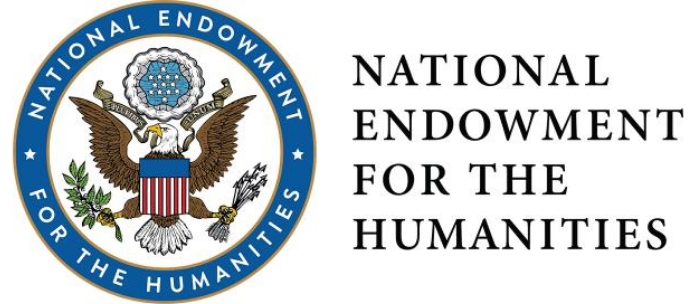
Funding for PA CultureCheck has been provided by the National Endowment for the Humanities. Additional support provided by a grant from the Commonwealth of Pennsylvania, Department of Community and Economic Development.